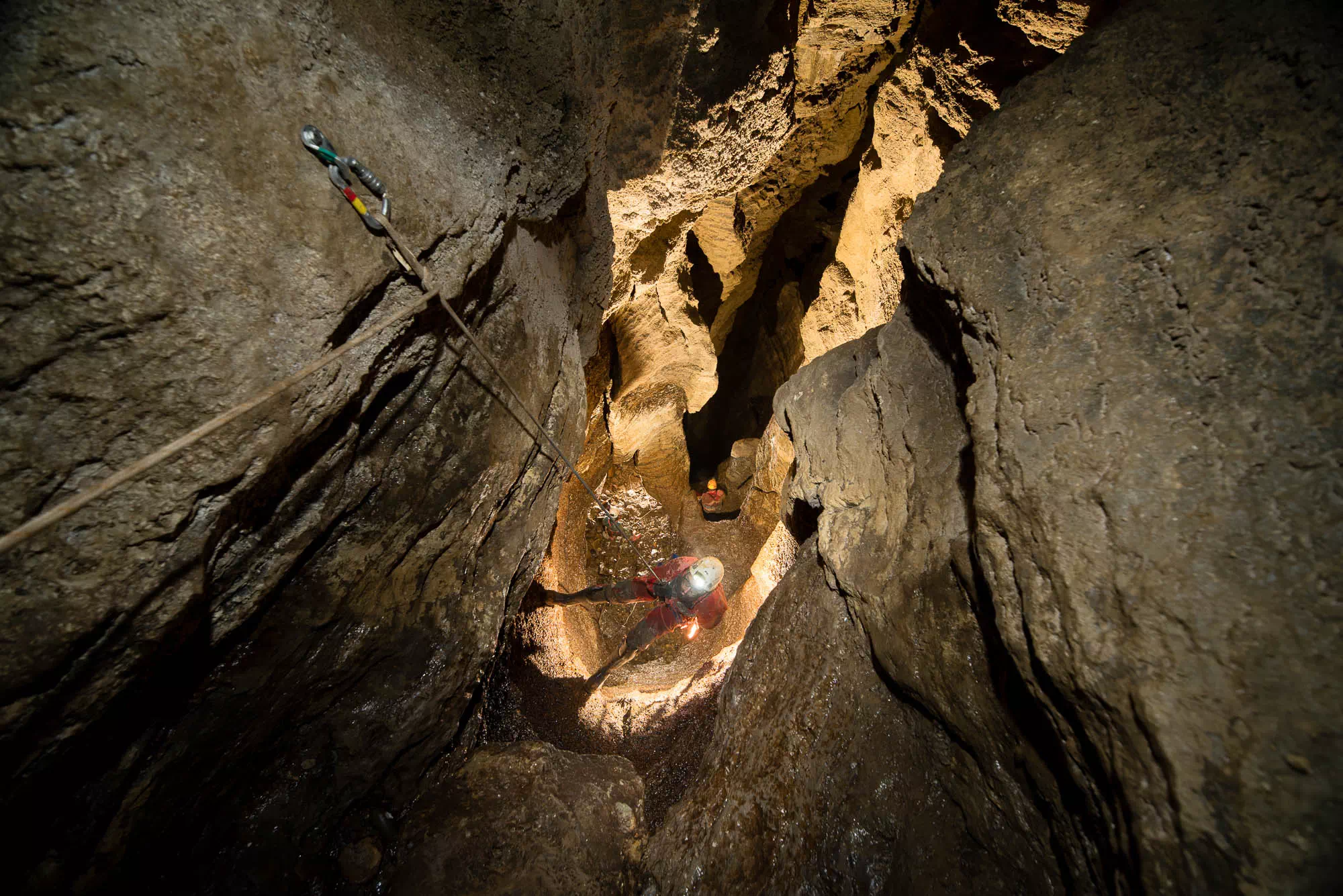The Junee-Florentine is home to many of Australia’s deepest caves, which drain into the Junee Master Cave. The Master Cave is only known in small unconnected sections, and this expedition was searching for new connections. Exploration in known caves and on the surface led to over 800 m of surveyed new passages.
Read more on these Tasmanian discoveries | Photo: Lost Pot, Junee-Florentine, Tasmania (© Axel Hack)
